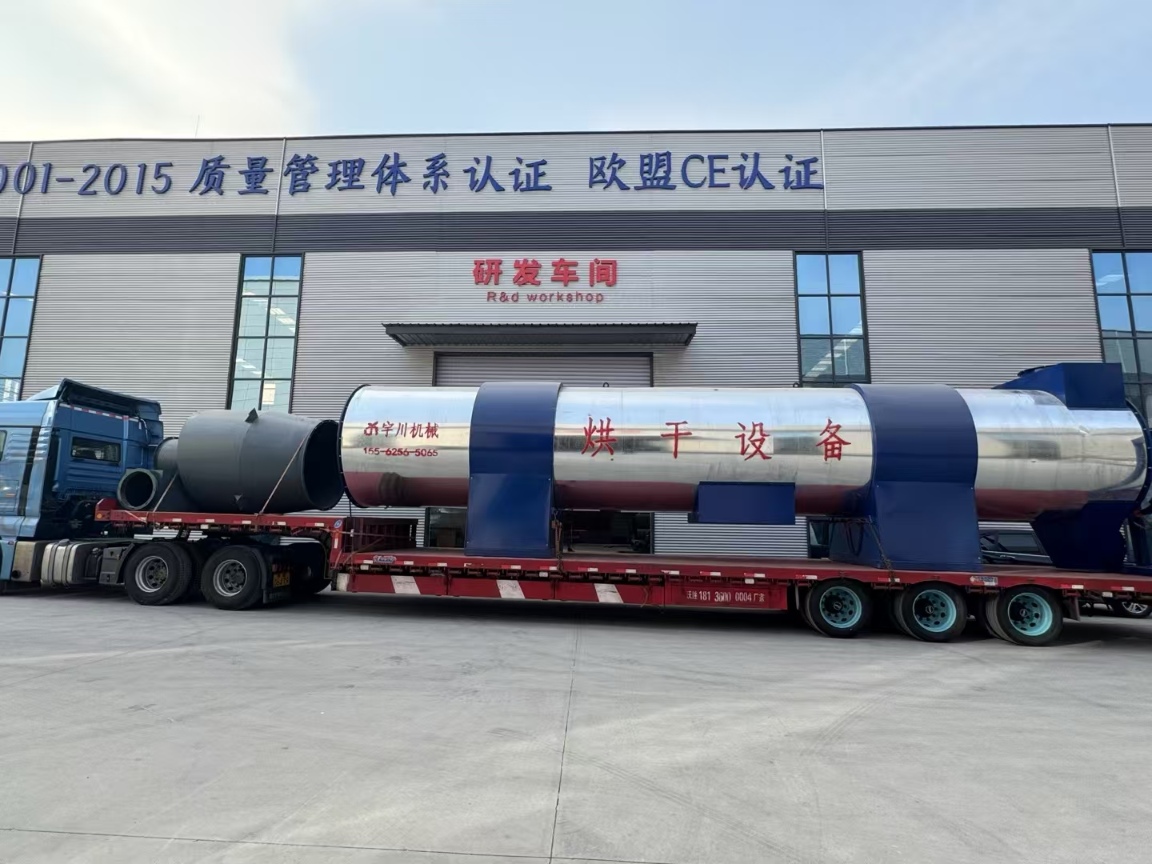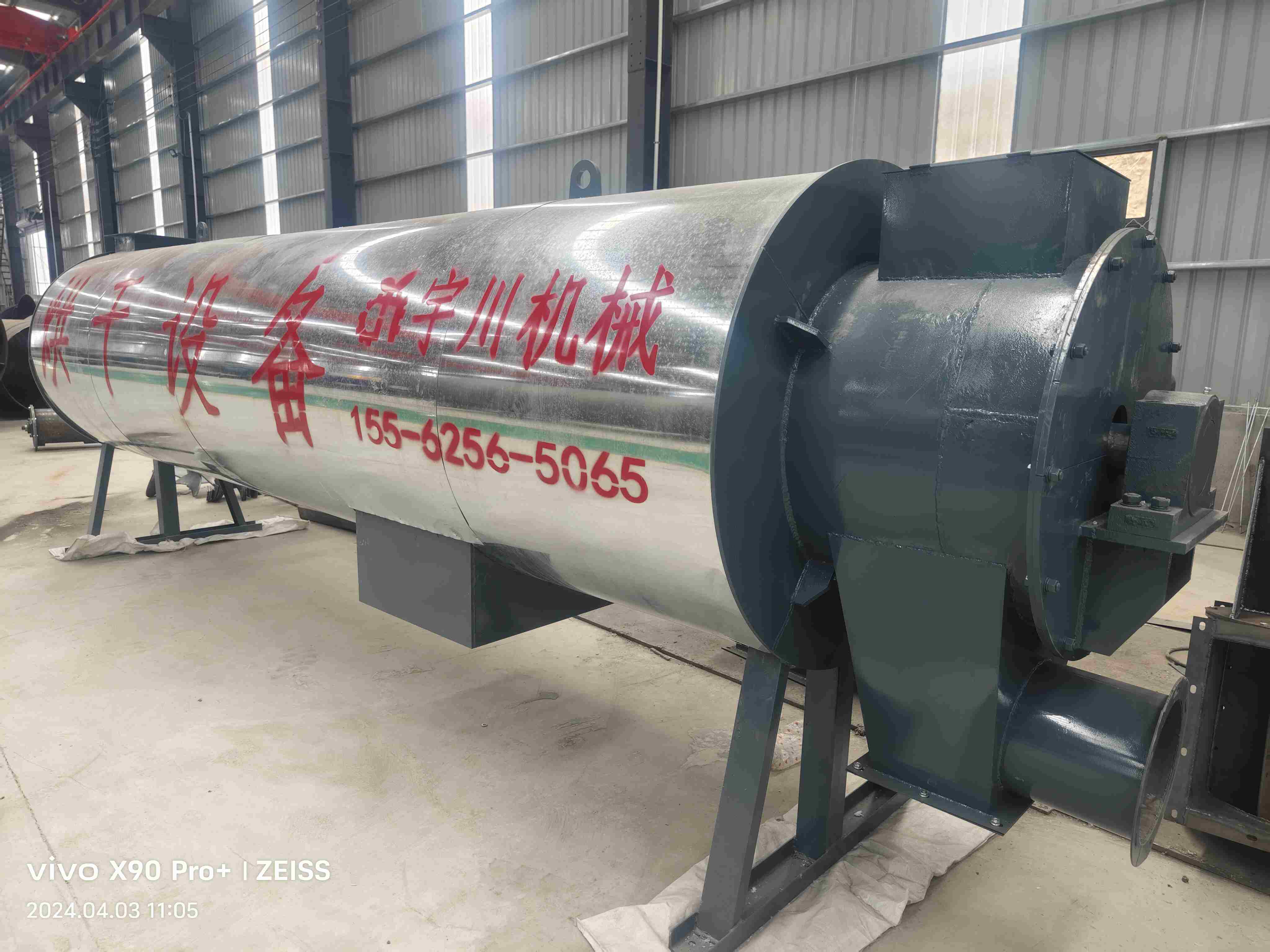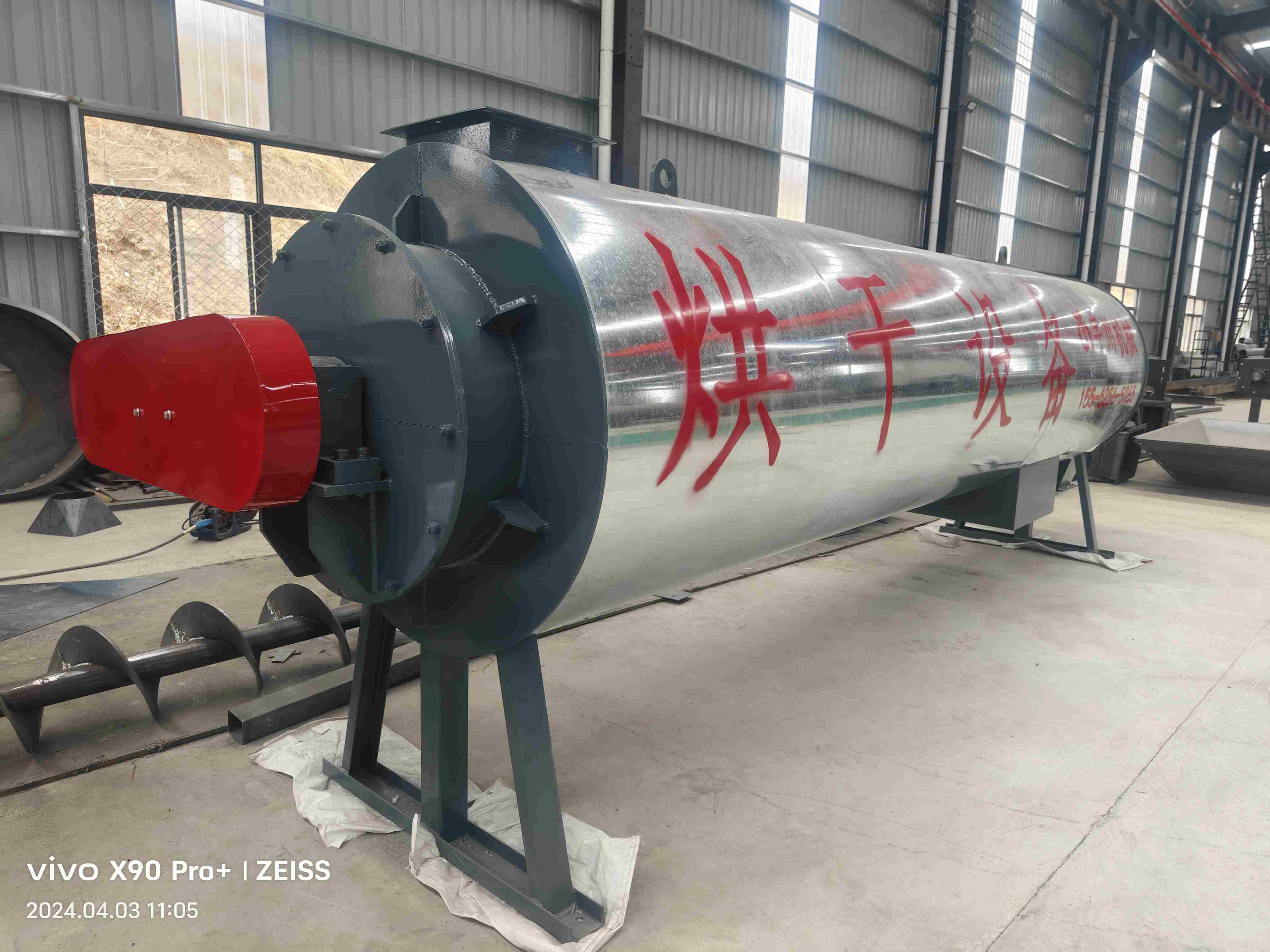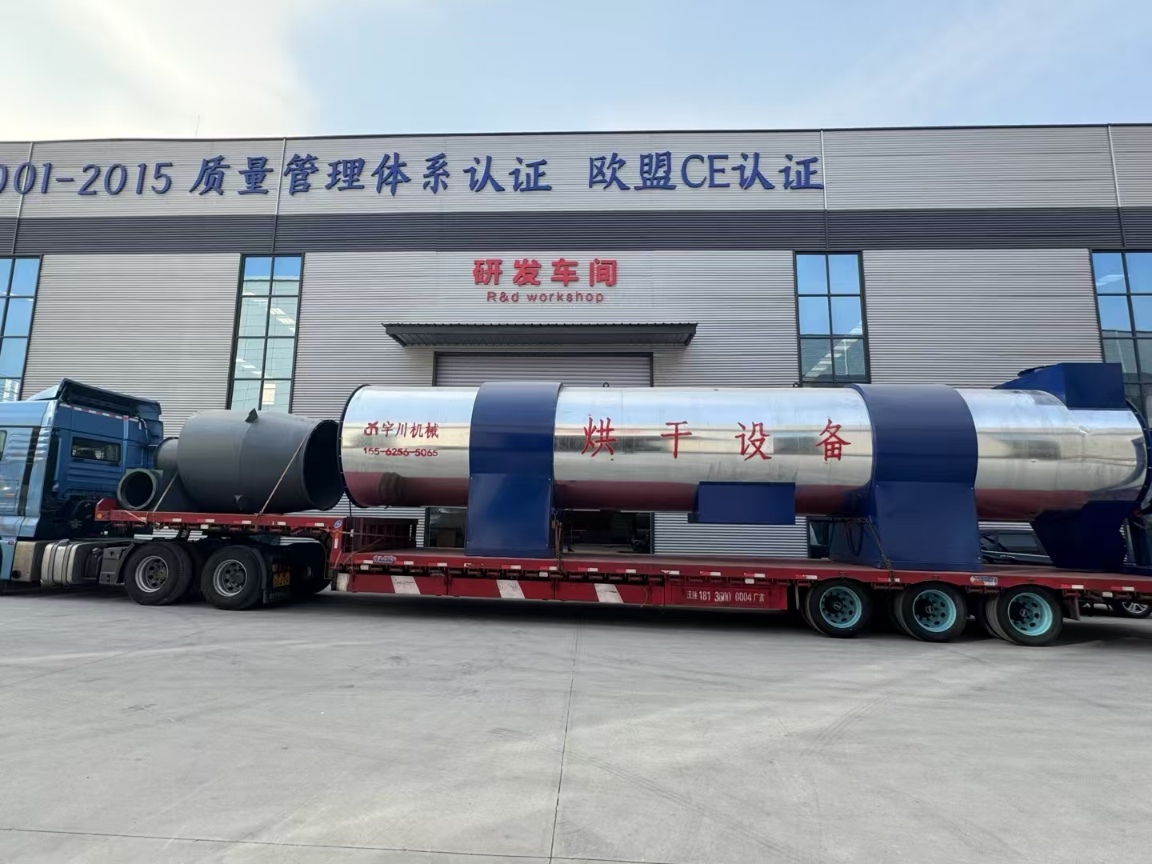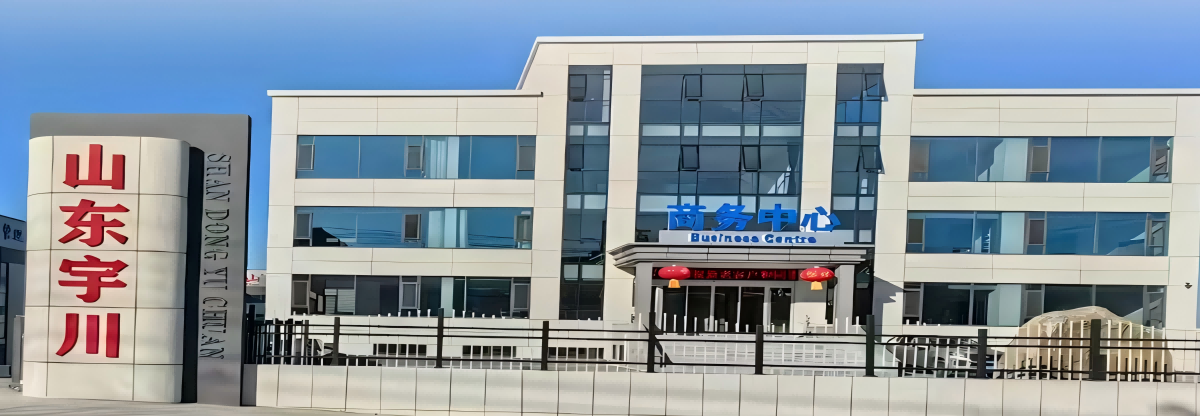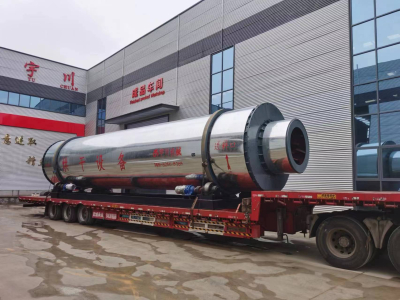Rotary Vacuum Dryer
The core advantages of the wood chip dryer (for wood waste like sawdust) lie in efficient drying, quality improvement, and energy - saving:
Value boost: Dries 40% - 60% moisture wood chips to 8% - 15%, solving mold and high transport costs. Usable as biomass fuel (↑30% efficiency), etc.
Uniform drying: Uses copying board turning & hot air penetration, ensuring even heating, no carbonization/clumping.
Energy - saving: Flexible heat sources, countercurrent heat exchange (60% - 5% efficiency). Optimized air - material ratio cuts 10% - 20% energy use.
Continuous work: 24 - hour operation, 0.5 - 50 tons/hour. Links with equipment for automated production lines.
Advantages of the Wood Shavings Dryer:
The wood shavings dryer is a specialized equipment designed for theration and drying of biomass materials such as wood shavings and sawdust, widely used in biomass energy, man-made boards, papermaking, and animal bedding. core advantages are reflected in the following aspects:
Efficient moisture removal, enhancing material value
Wood shavings naturally have a high moisture content (usually between 40%-0%), which can easily mold and have low combustion efficiency when used directly. The dryer can reduce the moisture content to 10%-20%, which not only facilitates and transportation but also improves the combustion efficiency of biomass pellet fuel (heat value increased by about 10%-15%), or enhances the bonding strength of man-made.
Low energy consumption, controllable operating costs
Modern wood shavings dryers mostly adopt thermal air circulation technology, combined with a waste heat recovery system, with a thermal utilization efficiency of over 70%. Some equipment can be paired with a biomass burner (using waste wood shavings as fuel), to achieve "energy supply from", significantly reducing fuel costs. Compared to traditional sun drying (which is greatly affected by weather and requires a large area), the dryer has a lower unit energy consumption and can continuously.
Adaptability, wide processing range
It can handle wood shavings of different sizes (particle size 0.5-50mm), including sawust, wood chips, and wood chips, etc.;
It can adapt to different initial moisture contents (20%-80% can be processed), and precisely adjust final moisture content through the control system (error ±1%);
It is suitable for various industries: biomass energy plants (pelletizing, briquetting), factories (board preprocessing), breeding farms (making bedding), etc.
High degree of automation, easy operation
Equipped with a PLC control system, it can and adjust parameters such as temperature, humidity, and feed rate in real-time, achieving automatic regulation. Some models support remote operation, reducing human intervention and labor intensity. At the time, the equipment is equipped with overload protection, fault alarm, and other functions, ensuring safer and more stable operation.
Key parameters for equipment selection
Capacity: Choose according demand (such as 1 ton/hour, 5 tons/hour, 20 tons/hour, etc.), and match it with the front-end woodavings output;
Heat source type: Prefer the type that matches the local energy supply (e.g., choose biomass burner in wood production area, and gas in areas where natural gas is convenient);
Final moisture content: Determine according to the use (such as 10%-15% for biomass pellets, and 2% can be relaxed for bedding);
Equipment material: For the part in contact with the material, select wear-resistant steel plates (such as Q345B) or steel (corrosion-resistant, suitable for wood shavings with impurities).
The technical principles and process flow of Wood Chips Drum Dryer:
1. Physical drying principle
Wet sawdust enters the drying drum through a screw conveyor and exchanges heat with the high-temperature hot air (150 ℃ -430 ℃) generated by the hot air stove. The material undergoes three stages inside the cylinder:
Material guide area: Scraping wood chips to form a material curtain, quickly evaporating surface moisture.
Cleaning area: Special guide plates break into clumps, increasing the heat exchange area.
Discharge area: Low temperature drying (60 ℃ -120 ℃) ensures that the moisture content of the material meets the standard, and outputs it through the discharge port.
2. Key process steps
Pre treatment: Grind wood chips to 2-8mm particles and control the initial moisture content (if it is too high, it needs to be dehydrated first).
Drying: Hot air comes into contact with the material in a forward or backward flow to complete dehydration.
Cooling and screening: Natural air cooling reduces temperature and screens out non-conforming products.
Packaging and Storage: Automatic metering packaging for easy transportation and long-term storage.
Comparison of Equipment Types and Characteristics:
| Type | Characteristic | Applicable scenarios |
| Single tube rotary type | Simple structure and low cost; But the thermal efficiency is low (about 35%) and it occupies a large area. | Small wood processing plants and individual businesses. |
| Three tube rotating type | Three layer concentric cylinder design, with thermal efficiency increased to over 70%; Reduce land occupation by 50% and electricity consumption by 60%. | Medium to large biomass energy enterprises and paper mills. |
| Pneumatic | Using high-speed airflow to suspend wood chips and forcing convection drying; Suitable for granular materials, but with high energy consumption. | Fine chemicals and small-scale laboratory drying. |
| Mesh belt type | Continuous production, suitable for drying thin layer materials; But the processing capacity is relatively small. | Drying of agricultural cellulose materials (such as straw). |

